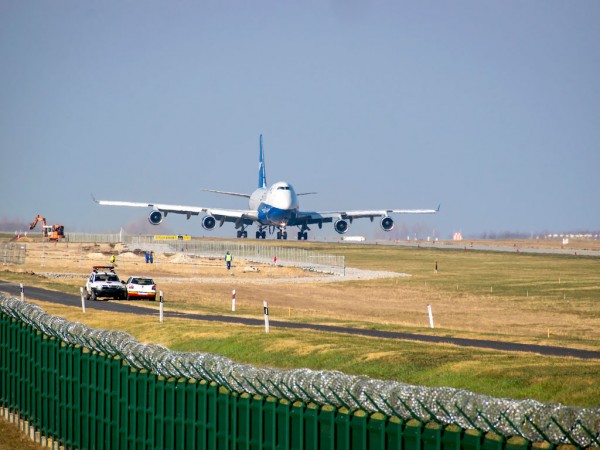The latest figures represent three years of continual double-digit growth in air cargo at Budapest Airport and exceeds the previous record rate set in 2017
Budapest, Hungary - Growth in cargo traffic at Budapest Airport (BUD) is accelerating after the Central European hub processed a record amount of freight in 2018 and beat the rate for the previous year.

“We are focussing all our efforts to make good use of the ideal conditions in Budapest and turn Liszt Ferenc International Airport into a major cargo logistics hub for the Central-Eastern European region.
“For this, we are establishing appropriate technical, security, and traffic conditions – the relevant projects entered the phase of implementation last year, and we can successfully complete them this year.
“As a first step we handed over a 16,000 m2 new cargo warehouse and office capacity for our integrator partners in 2017; their traffic has been constantly developing for years.”
Now the work is ongoing on a new EUR32.6 million, 20,000 m2 dedicated freight centre called Cargo City, which will expand BUD’s total cargo handling capacity to 250,000 tonnes per year, as well as an additional 10,000 m2 forwarder building.
In addition, BUD is constructing a new cargo apron of 32,000 m2, in the proximity of Runway 2, where two Boeing B-747-8F freighters can be serviced simultaneously.
“The combined value of this development effort in 2019 reaches EUR46 million, and is financed by Budapest Airport itself,” said Droese.
“Our goal is to deliver, by the end of this year, an ideal cargo infrastructure for all segments of our well-balanced customer portfolio, for full freighters, belly cargo, integrators and roader feeder trucking too.
“Rising demand is illustrated by the fact that last year a number of wide body and jumbo freighters were being loaded at the airport each day, including Boeing B-747s operated by Cargolux, AirBridgeCargo, and Silk Way West, and Airbus A300s, A310s, A330s, used by Turkish Cargo and Qatar Airways Cargo.”
The main target markets of BUD Cargo are in Asia, especially China, Korea, Japan, and in North America with a focus on the US and Canada.
These regions present a rapidly growing export / import flow within the cargo catchment zone of BUD, especially in the automotive, electronics, pharmaceutical, and e-commerce sectors.
“Our cargo team is working hard on conferences and workshops from China to the US, to present the potential of Budapest Airport Cargo in the Central and Eastern European region,” said Droese.
“The cargo business has strategic importance for our airport, and we handle our cargo projects with high priority.”
BUD has seen year-on-year growth in air cargo traffic, with annual records consistently being broken.
From 2015 to 2018, the cargo volumes of the airport increased by more than 60 percent.









